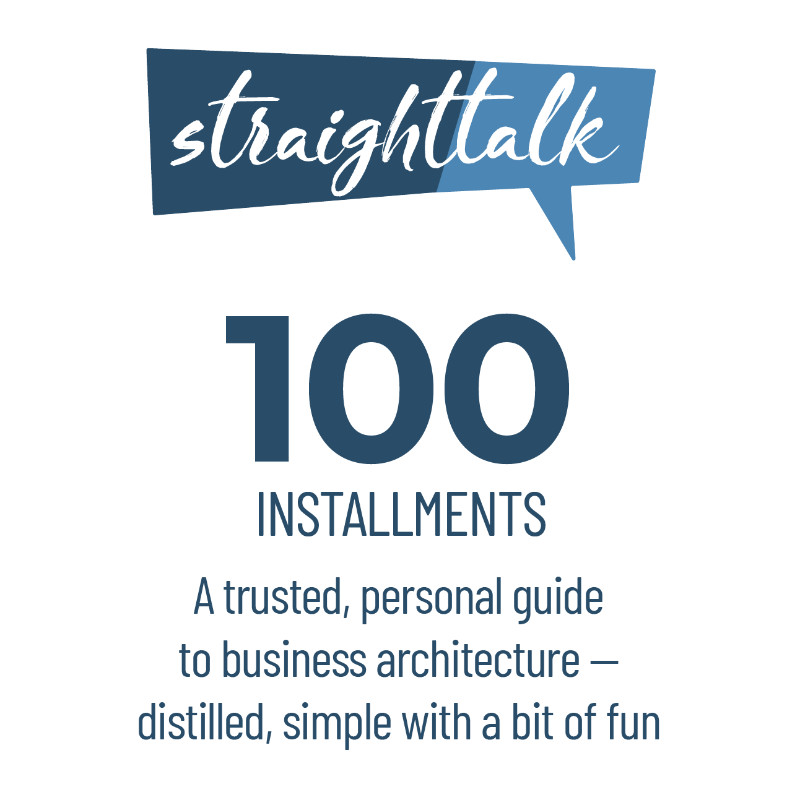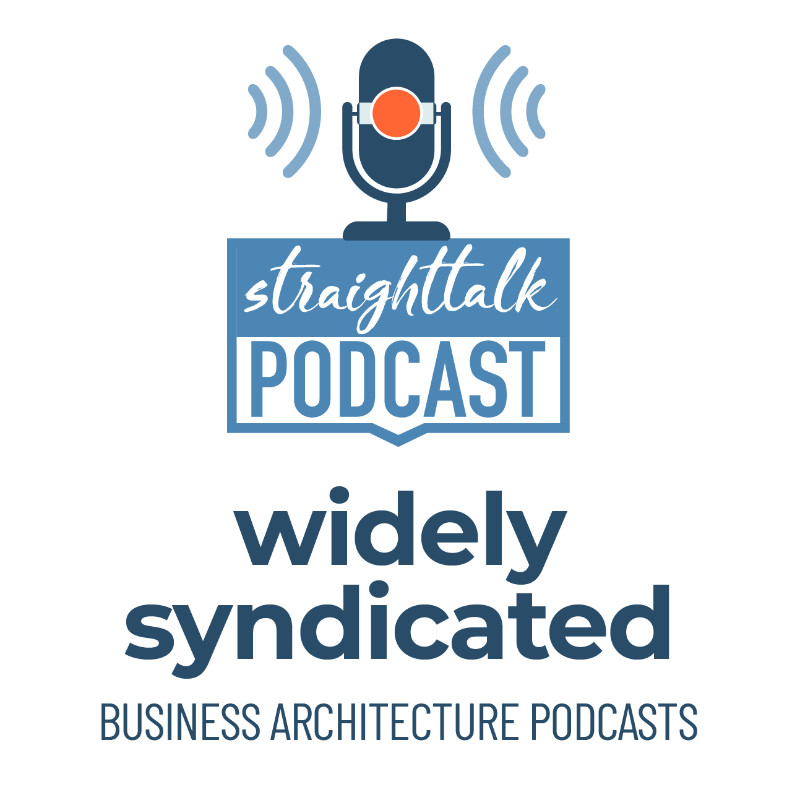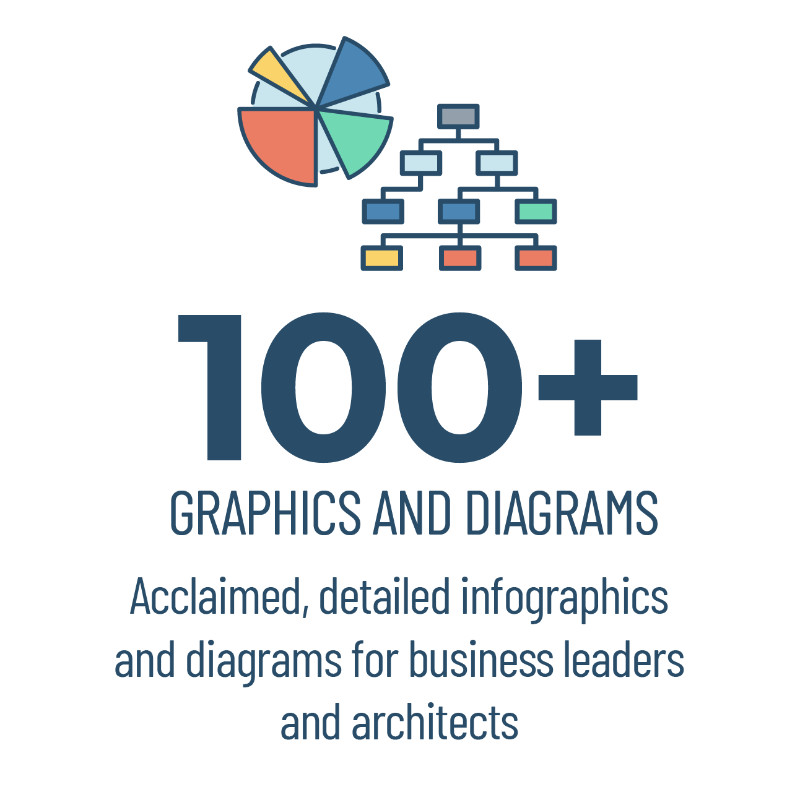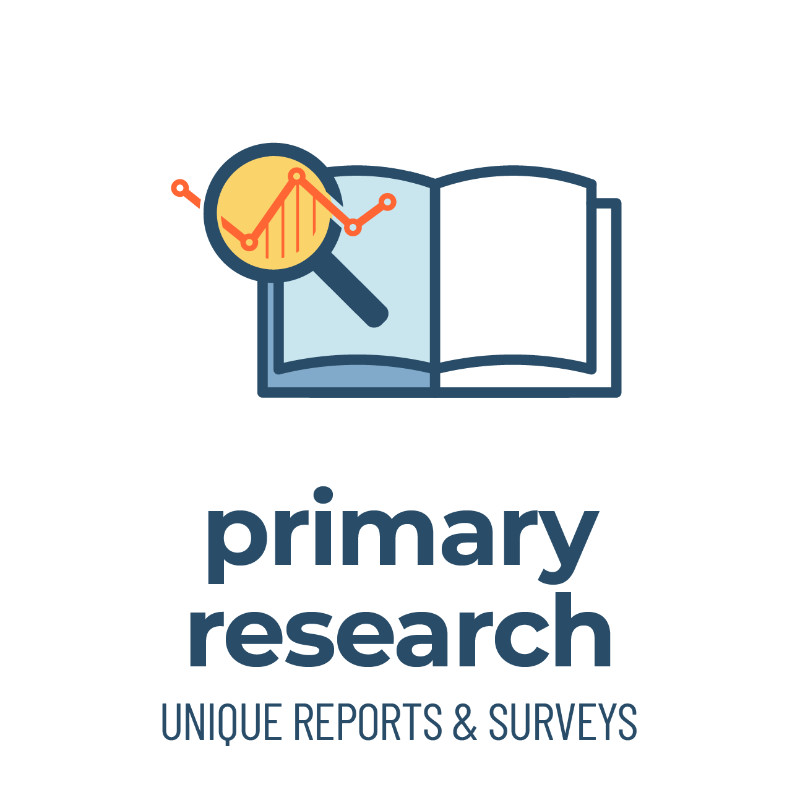Resource Library
The Resource Library contains numerous articles, white papers, posts, podcasts, videos, surveys, and primary research — plus original diagrams and infographics about Business Architecture and Transformation. Use the Filter to narrow your search or click on the graphical shortcuts below to popular content categories. Also, check out our StraightTalk podcasts and other syndicated content available on Apple, Spotify, Stitcher, iHeart Radio, or wherever you find your podcasts.
473 results found. Displaying 457 - 468
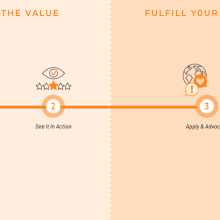
In Step 3, start leveraging business architecture and working with business architecture practitioners to achieve real business value.
Basic page
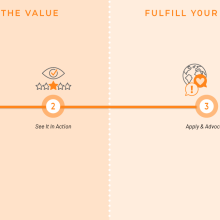
In Step 1, gain an overall understanding of the why, what and how of business architecture as well as how it fits within a broader context.
In Step 2, delve further to explore the potential value and usage scenarios for business architecture as well as see how other organizations are leveraging it. The resources are grouped by usage scenarios and related disciplines to help you quickly locate content that applies to you.
In Step 2, delve further to explore the potential value and usage scenarios for business architecture as well as see how other organizations are leveraging it. The resources are grouped by usage scenarios and related disciplines to help you quickly locate content that applies to you.
Basic page
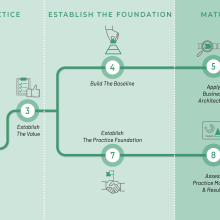
In Step 5, business architecture is applied to various business usage scenarios to deliver value to the organization. This step is the most important one and is the reason why business architecture exists. Building the knowledgebase and creating supporting practice infrastructure should be completed just enough, just in time to support the relevant usage scenarios in this step.
In Step 6, the business architecture is expanded and refined as needed, prioritized by the relevant usage scenarios from Step 5. This may include activities such as decomposing capabilities or articulating new value streams, mapping additional business architecture domains beyond the baseline (e.g., business units, strategies, policies, products, stakeholders, initiatives or metrics) or cross-mapping the business architecture to domains from other disciplines (e.g., cross-mapping capabilities to journeys, processes, applications, software services or requirements).
In Step 8, the business architecture practice maturity is assessed along with other measurements of its success. In conjunction with practice goal setting, this informs Step 9 to drive practice direction over the next horizon.
In Step 9, goals are established for the practice during the next horizon. These goals along with the results of the business architecture practice maturity assessment and other success measurements are then used to plan enhancements for the practice during the next horizon, resulting in a practice roadmap. The planned enhancements are executed and measured again in Step 8. Steps 8 and 9 typically occur as an annual planning rhythm where the measurement, goal-setting and next horizon planning for the business architecture practice are done at the end of the year, and then practice enhancements are executed during the following year. All planned practice enhancements should be directly aligned with how business architecture is being applied in Step 5.
In Step 6, the business architecture is expanded and refined as needed, prioritized by the relevant usage scenarios from Step 5. This may include activities such as decomposing capabilities or articulating new value streams, mapping additional business architecture domains beyond the baseline (e.g., business units, strategies, policies, products, stakeholders, initiatives or metrics) or cross-mapping the business architecture to domains from other disciplines (e.g., cross-mapping capabilities to journeys, processes, applications, software services or requirements).
In Step 8, the business architecture practice maturity is assessed along with other measurements of its success. In conjunction with practice goal setting, this informs Step 9 to drive practice direction over the next horizon.
In Step 9, goals are established for the practice during the next horizon. These goals along with the results of the business architecture practice maturity assessment and other success measurements are then used to plan enhancements for the practice during the next horizon, resulting in a practice roadmap. The planned enhancements are executed and measured again in Step 8. Steps 8 and 9 typically occur as an annual planning rhythm where the measurement, goal-setting and next horizon planning for the business architecture practice are done at the end of the year, and then practice enhancements are executed during the following year. All planned practice enhancements should be directly aligned with how business architecture is being applied in Step 5.
Basic page
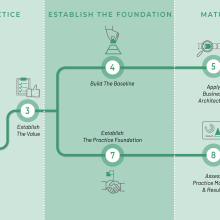
In Step 4, the minimum business architecture baseline is developed for the scope of the entire organization and its ecosystem. This includes a capability map based on defined business information concepts, a set of key-value streams, and value stream/capability cross-mappings.
In Step 7, the initial business architecture team is formally established and key aspects of practice infrastructure are put into place such as a defined value proposition, charter, engagement model, and practice advancement roadmap.
In Step 7, the initial business architecture team is formally established and key aspects of practice infrastructure are put into place such as a defined value proposition, charter, engagement model, and practice advancement roadmap.
Basic page
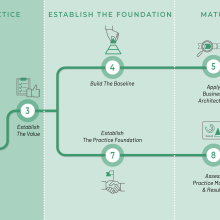
In Step 1, the initial business architecture champion(s) and practitioners gain an understanding of what business architecture is and is not, how it can be used, and where it fits within an enterprise context. The initial practitioners also attain level 1 Certified Business Architect® certification. (Note: Business architecture practitioners will need a much deeper dive to learn the business architecture discipline and attain level 1 certification as compared to the business architecture practice leaders.)
In Step 2, the initial business architecture champion(s) and practitioners delve further to explore the potential value and usage scenarios for business architecture as well as see how other organizations are leveraging it. They also explore related integration points with other disciplines and teams. In Step 3, the initial value proposition and usage scenarios for business architecture specific to the organization are defined, in alignment with strategic priorities. The value of business architecture is articulated in a clear, simple and compelling way for all key stakeholders.
In Step 2, the initial business architecture champion(s) and practitioners delve further to explore the potential value and usage scenarios for business architecture as well as see how other organizations are leveraging it. They also explore related integration points with other disciplines and teams. In Step 3, the initial value proposition and usage scenarios for business architecture specific to the organization are defined, in alignment with strategic priorities. The value of business architecture is articulated in a clear, simple and compelling way for all key stakeholders.
Basic page
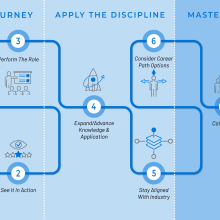
In Step 7, work with other practitioners to architect across organizational boundaries and join your tribe to share learnings and collaborate to advance the discipline. In Step 8, give back by mentoring and assisting other business architecture professionals as well as leveraging the discipline to benefit non–profit organizations, small businesses, and social initiatives.
Basic page
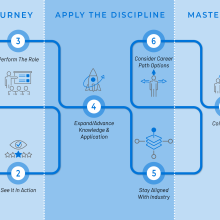
In Step 4, continue advancing your business architecture career by expanding your knowledge, abilities and experiences, which will allow you to become a trusted advisor and address increasingly strategic, large and complex business challenges and opportunities. Consider that success in the business architect role is not just in what you do, but in how you perform the role. Begin leveraging your role as a business architect to lead and influence your organization and sphere of influence on topics that matter such as a vision for effective design, expansion into business ecosystems, sustainability or other relevant opportunities. In Step 5, stay current with the latest business architecture evolution and practice. In Step 6, explore advanced business architecture career path options and alternate routes well.
Basic page
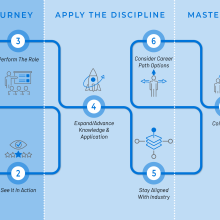
Whether you are transitioning into the business architect role, ready to take your business architecture career to the next level, or are a fully seasoned business architecture expert, we are delighted you’re here. The business architecture journey is an exciting and rewarding one – practiced by an impressive community of professionals who seek to make a difference in their organizations and the world.
If you’re new to it, the whole topic of business architecture can seem a bit overwhelming, but the Practitioner Learning Pathway will break it down for you one step at a time. We will try to get you over the learning curve as quickly as possible, because we know that ultimately your goal as a business architecture practitioner is to deliver real business value and outcomes. On the other hand, if you’re already in the business architecture world, you can skim across the learning pathway for new ideas and insights to inform your thinking and keep up with the latest in global thought. You may also want to focus on the later steps in the learning path for considering career path options, collaborating with others and giving back.
The Practitioner Learning Pathway begins with Steps 1, 2 and 3 which provide a critical foundation for your career and success as a business architecture practitioner. Consider performing Steps 1 and 2 in parallel, and potentially even Step 3 if you are already in the role. In Steps 4 and 5, you become an experienced practitioner and deliver tremendous strategic value to your organization while also shifting mindsets and ways of working over time. Once you’ve achieved a level of competence and success in the role, you can consider career path options in Step 6. Steps 7 and 8, which are about collaborating with and giving back to others. This is a great way to advance and bring meaning to your career – and you can start doing so now even if you are not a seasoned expert .
Depending on your situation, your journey as a practitioner may coincide with the journey of your organization’s business practice. If so, refer to the Practice Learning Pathway for other activities and resources within the broader context, especially during Steps 1 through 4.
If you’re new to it, the whole topic of business architecture can seem a bit overwhelming, but the Practitioner Learning Pathway will break it down for you one step at a time. We will try to get you over the learning curve as quickly as possible, because we know that ultimately your goal as a business architecture practitioner is to deliver real business value and outcomes. On the other hand, if you’re already in the business architecture world, you can skim across the learning pathway for new ideas and insights to inform your thinking and keep up with the latest in global thought. You may also want to focus on the later steps in the learning path for considering career path options, collaborating with others and giving back.
The Practitioner Learning Pathway begins with Steps 1, 2 and 3 which provide a critical foundation for your career and success as a business architecture practitioner. Consider performing Steps 1 and 2 in parallel, and potentially even Step 3 if you are already in the role. In Steps 4 and 5, you become an experienced practitioner and deliver tremendous strategic value to your organization while also shifting mindsets and ways of working over time. Once you’ve achieved a level of competence and success in the role, you can consider career path options in Step 6. Steps 7 and 8, which are about collaborating with and giving back to others. This is a great way to advance and bring meaning to your career – and you can start doing so now even if you are not a seasoned expert .
Depending on your situation, your journey as a practitioner may coincide with the journey of your organization’s business practice. If so, refer to the Practice Learning Pathway for other activities and resources within the broader context, especially during Steps 1 through 4.
Basic page
The BizArchMastery.com website (the "Site") is comprised of various web pages operated by Biz Arch Mastery ("Biz Arch Mastery"). BizArchMastery.com is offered to you conditioned on your acceptance without modification of the terms, conditions, and notices contained herein (the "Terms"). Your use of BizArchMastery.com constitutes your agreement to all such Terms. Please read these terms carefully, and keep a copy of them for your reference.
Basic page
The most comprehensive guide including 51 common frequently asked questions concerning the business architecture discipline, or what we call FABAQ. We’ve provided you with straightforward answers, plus additional resources to valuable business architecture references that offer immersive information.
Basic page
This is a brief summary of what the Practitioner’s Journey involves and a quick description of the resources available on this page, which is geared to individual practitioner just starting out.
Basic page
